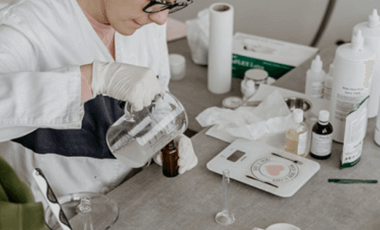





Introduction
In light of the COVID situation, we have all stepped up our cleaning game. Many of us feel it is not enough to just sanitise and disinfect our hands but also our homes! Disinfecting our homes is especially important for people who are leaving their homes frequently for groceries, work, or even exercise. In this article, we will learn more about the commonly used chemicals that are in our disinfectant products and how they compare to one another!
1) Quaternary ammonium compounds
One of the most common chemicals found in our disinfectants are the quaternary ammonium compounds.
Examples are:
Basically, if you see the word “chloriDe” in your disinfectant’s ingredient list, the active chemical that is doing its job is the quaternary ammonium compounds.
|
| + | - |
|
Effectiveness |
|
|
|
Health Effects |
|
|
Caution: Do not use quat products on any food-contact surfaces (like cutting boards, plates or cutlery, high chair trays etc.) because these potent chemicals can contaminate the food they come into contact with, even well after cleaning is done.
2) Chlorine-based Disinfectants
Examples of chlorine-based disinfectants are:
Yes, as long as its “ChloriTe”, you are looking at a chlorine-based disinfectant.
|
| + | - |
|
Effectiveness |
|
|
|
Health Effects |
|
|
Caution: Similar to quats, such disinfectants cannot be near or used on any food products surfaces.
3) Oxygen-Based Sterilizers
Using Peracetic acid (CH3COOOH), a strong disinfectant that kills germs, fungi and viruses. It can also remove bad odour because it destroys the causative substance by decomposing it to acetic acid, oxygen and water without posing any environmental hazard. A concentration of 0.2% peracetic acid is active against all microorganisms including bacterial spores, and is effective in the presence of organic matter at low temperature
Furthermore, peracetic acid is a safe substance used as a food additive announced by KFDA (Korea Food and Drug Administration). Very suitable to sterilize kitchen tools and food preparation areas.
Mechanism
|
| + | - |
|
Effectiveness |
|
|
|
Health Effects |
|
|
Making safer choices for your homes
While we make an effort to keep our homes clean from germs, viruses and bacteria, we should also make informed choices on which safe active ingredients we should be using to protect ourselves and loved ones.
Contact Us to get your hands on one of our oxygen-based sterilizing products!

Many common household cleaning products that we get from the supermarkets contain chemicals that can harm your body. Learn what products to avoid and what you can do!

With the current Covid-19 outbreak and no effective vaccine available in the near future, maintaining personal hygiene is still the best precaution against the virus. One way is definitely the use of hand sanitizers when washing of hands is unavailable. In this article, we will discuss the effectiveness of alcohol-free hand sanitisers and whether they can protect us from this Covid-19 virus.